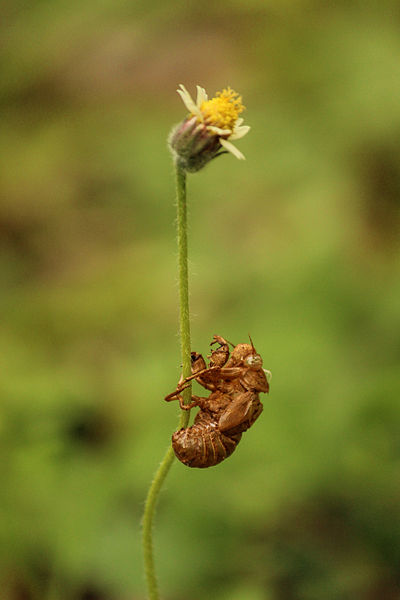The mollusc shell is typically a calcareous exoskeleton which encloses, supports and protects the soft parts of an animal in the phylum Mollusca, which includes snails, clams, tusk shells, and several other classes. Not all shelled molluscs live in the sea; many live on the land and in freshwater.
Diversity and variability of shells of molluscs on display.
Variety of Mollusc shells (gastropods: land snail shells and seashells).
Closed and open shells of a marine bivalve, Petricola pholadiformis. A bivalve shell is composed of two hinged valves which are joined by a ligament.
Four views of a shell of the land snail Arianta arbustorum
An exoskeleton is a skeleton that is on the exterior of an animal to both support the body shape and protect the internal organs, in contrast to an internal endoskeleton which is enclosed underneath other soft tissues. Some large, hard and non-flexible protective exoskeletons are known as shell or armour.
Discarded exoskeleton (exuviae) of dragonfly nymph
Exoskeleton of cicada attached to a Tridax procumbens (colloquially known as the tridax daisy)
Borings in exoskeletons can provide evidence of animal behaviour. In this case, boring sponges attacked this hard clam shell after the death of the clam, producing the trace fossil Entobia.







